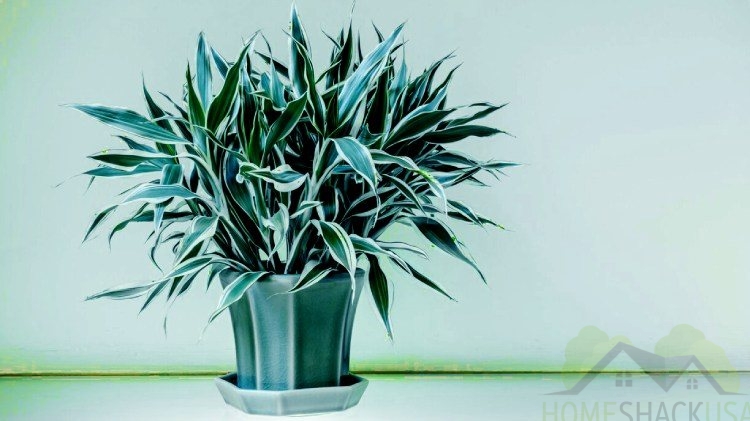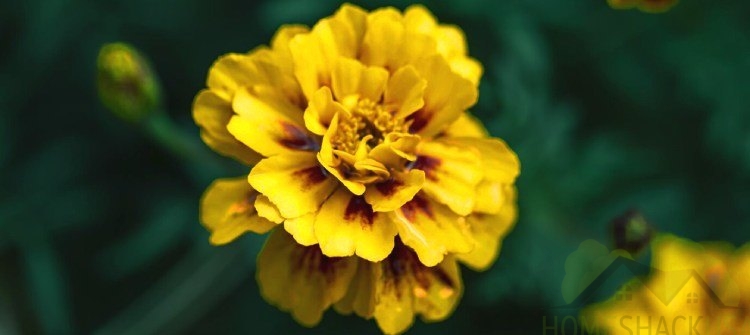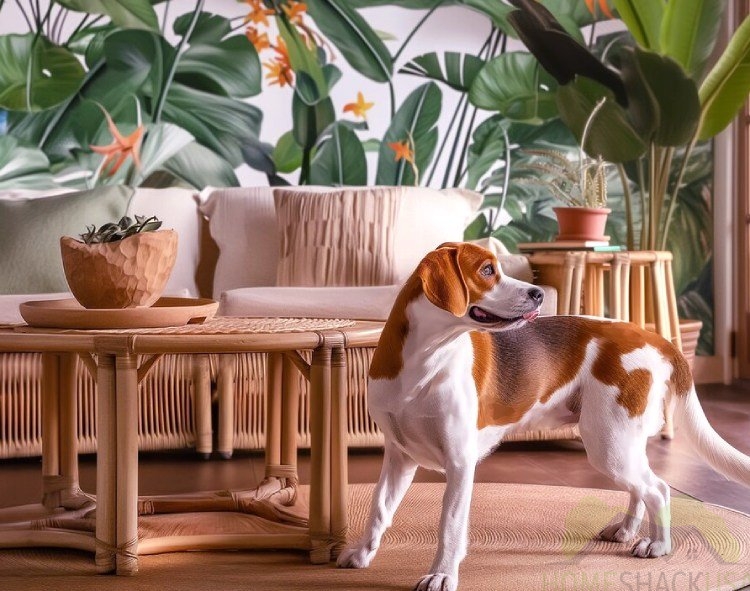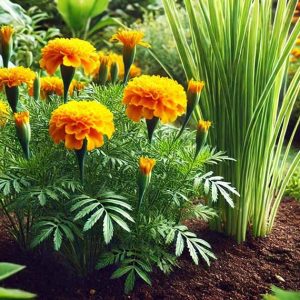Bringing greenery into your home and garden can truly create a calming atmosphere. However, if you share your space with pets, it becomes essential to choose the right pet-friendly plants.
With the appropriate selection, you can enjoy vibrant foliage while ensuring the safety of your furry companions.
In this discussion, we’ll explore the benefits of pet-friendly plants, provide tips on how to choose them, and present a curated list of indoor and outdoor options.
We will also cover safety measures to protect your pets, along with what to do in case of an emergency.
Why should you consider pet-friendly plants?
When establishing a green space in your home, it is essential to consider pet-friendly plants that improve indoor air quality while ensuring the safety and well-being of your pets. Our furry companions are naturally curious, and certain indoor and outdoor plants can indeed pose serious health risks to them.
By selecting non-toxic plants, such as those that are safe for dogs and cats, you can create a vibrant environment without compromising the safety of your pets.
Furthermore, having a solid understanding of pet wellness and the impact of various plant types on it can provide peace of mind as you enjoy the beauty of your living space.
How to choose pet-friendly plants?
When selecting pet-friendly plants, it is essential to consider several factors to ensure a safe and welcoming environment for your pets while also enjoying the aesthetic appeal of greenery.
Begin by educating yourself on plant care tips that emphasize non-toxic varieties suited to the light and humidity conditions in your home.
From low-maintenance options like succulents to vibrant, pet-safe herbs, being aware of the toxicity levels of different plants will help ensure that your indoor gardening choices do not pose a risk to your furry friends.
1. Check for toxicity
The initial step in ensuring that your home is filled with pet-friendly plants is to conduct a thorough check on the toxicity levels of potential choices. Many common houseplants can pose risks to pets, leading to allergies and other health issues. By identifying safe plants for dogs and cats, you can cultivate an environment that promotes both plant health and pet wellness.
To effectively research plant toxicity, consider utilizing resources such as the ASPCA’s comprehensive database, which provides detailed information on a variety of plants and their effects on pets.
Engaging with local horticultural societies can also offer valuable insights into non-toxic plant varieties native to your area. Additionally, online forums and pet care blogs serve as useful platforms where pet owners can share their experiences and recommendations.
Understanding which plant varieties are safe not only enhances pet safety but also enriches the experience of having greenery in your home. Conducting proper research ensures that all living members of your household can thrive in harmony.
2. Consider your pet’s behavior
When selecting pet-friendly plants, it is essential to take your pet’s behavior and tendencies into account, as this can significantly influence your choices. For example, if you have a cat that enjoys chewing on foliage, it may be wise to consider sturdier houseplants, such as spider plants or peace lilies, which tend to be less appealing to pets.
Understanding your pet’s habits allows for more informed gardening decisions and pet-friendly landscaping that safeguards your plants.
Additionally, if your dog has a tendency to dig or nibble, you might want to lean towards more resilient plants, like succulents or rubber plants, which are often overlooked by pets. It is also crucial to conduct thorough research on toxic plants that could pose a risk to your furry companions.
Avoiding these plants can help prevent potential health issues and ensure your garden continues to thrive.
Incorporating fragrant herbs like mint or rosemary into your indoor garden can further deter pets from unwanted nibbling, creating a harmonious environment where both plants and pets can coexist peacefully.
3. Research the plant’s care requirements
Researching the care requirements of plants is essential when selecting pet-friendly options, as not all plants thrive in every environment.
Choosing easy-care plants that are non-toxic and suitable for your home’s lighting and humidity conditions will contribute to a successful indoor gardening experience.
Whether you’re interested in vibrant decorative plants or hardy outdoor varieties, understanding their specific care needs is key to ensuring both the longevity of the plants and the safety of your pets.
By taking the time to consider factors such as light exposure and watering needs, you can create an optimal environment that fosters healthy plant growth while keeping your furry friends safe.
For example, some plants thrive in bright, indirect sunlight, whereas others may prefer shadier spots. Establishing a consistent watering routine is crucial to prevent both overwatering and underwatering, as either can be detrimental to plant health.
Additionally, assessing the humidity levels in your home will help you determine which plants are likely to thrive, allowing you to create a lush, vibrant atmosphere without compromising the well-being of your beloved pets.
Indoor pet-friendly plants
Indoor pet-friendly plants serve a dual purpose they enhance the beauty of your living space and improve indoor air quality, making them particularly valuable for homes with pets.
By choosing houseplants that are not only safe for pets but also low maintenance, pet owners can enjoy the benefits of greenery without the burden of complex care routines.
From air-purifying varieties like the snake plant to colorful, pet-safe flowers, there is a wide range of indoor pet-friendly plants available that can complement your home decor while ensuring the safety of your beloved pets.
1. Spider plant

The spider plant is an excellent option for pet owners seeking a plant that is both pet-friendly and well-suited for indoor living. This resilient indoor plant not only purifies the air but is also non-toxic to pets, which makes it a popular choice among houseplants for those with animals.
Its attractive foliage and low-maintenance care requirements appeal to both plant enthusiasts and pet owners alike.
With its long, arching leaves adorned with vibrant green and creamy white stripes, the spider plant adds a lively touch to any space. This adaptable plant thrives in indirect sunlight and requires minimal watering, making it ideal for individuals who are balancing busy lifestyles with the joy of indoor gardening.
Furthermore, its ability to produce ‘pups’ or baby plants allows for easy propagation, providing an opportunity to expand one’s collection or share with fellow plant lovers.
The spider plant’s aesthetic appeal, combined with its safety for furry companions, truly makes it an ideal addition to any home environment.
2. Boston fern
The Boston fern is an excellent choice for individuals seeking humidity-loving indoor plants that are also safe for pets. With its lush, decorative fronds, this plant thrives in moist environments and positively contributes to indoor air quality, making it both aesthetically pleasing and functional.
Moreover, being classified as a pet-friendly plant ensures that your furry companions can safely frolic around it.
Beyond its stunning appearance, the Boston fern has specific care requirements that make it a rewarding option for plant enthusiasts. It prefers indirect sunlight and a cool, humid atmosphere, which can be easily achieved by regularly misting its leaves or placing it in a well-lit bathroom.
Not only does this fern enhance the aesthetic of any space, but it also serves as a natural air purifier, filtering out harmful pollutants and creating a healthier indoor environment.
Its ability to thrive without being toxic to pets makes it an ideal choice for animal lovers looking to beautify their homes.
3. Areca palm

The Areca Palm is a beautiful decorative plant that brings a tropical vibe to your indoor space while remaining safe for pets. This low-maintenance plant not only ensures the safety of your beloved animals but also functions as a natural air purifier, enhancing the quality of indoor air.
With its elegant fronds, the Areca Palm seamlessly complements any decor style without compromising on the welfare of your pets.
Its vibrant green leaves create a refreshing atmosphere in any room, making it an excellent choice for plant enthusiasts looking to enrich their living environment.
The Areca Palm thrives in bright, indirect light and requires only moderate watering, which makes it particularly suitable for those who may not have extensive gardening experience.
Incorporating this indoor pet-friendly plant into your home provides both aesthetic and health benefits, fostering a tranquil space that encourages relaxation and well-being.
By choosing a pet-safe plant like the Areca Palm, individuals can relish the beauty of nature indoors without concerns for the safety of their furry companions.
4. Friendship plant
The Friendship Plant, recognized for its unique leaves and endearing name, serves as an excellent addition to any pet-friendly indoor garden.
This delightful houseplant thrives in moderate light and is non-toxic, making it a safe option for households with furry companions. Its distinct texture and vibrant green color not only enhance the decor of your room but also prioritize the safety of your pets.
Beyond its visual appeal, the Friendship Plant is relatively low-maintenance, requiring only regular watering and occasional feeding during its growing season.
Pet owners will find it particularly appealing, as this plant tolerates humidity well, allowing it to adapt to various indoor environments. Additionally, it contributes to air purification, providing yet another advantage for your living space.
By creating a welcoming atmosphere for both humans and animals, the Friendship Plant emerges as an ideal choice for those looking to enhance their indoor gardening experience.
Outdoor pet-friendly plants
In outdoor environments, pet-friendly plants are essential for establishing a safe and enjoyable garden that caters to the playful nature of your pets.
By choosing outdoor plants that are safe for both dogs and cats, you can create a vibrant garden that not only enhances the visual appeal but also ensures your pets’ safety as they explore.
Incorporating a diverse selection of decorative plants not only enriches your landscape design but also provides a welcoming sanctuary for your furry companions.
1. Sunflowers

Sunflowers are not only a charming addition to any garden but also a pet-friendly plant that adds cheer and color to your outdoor space.
With their tall, vibrant blooms, sunflowers are safe for pets and serve as a striking decorative element in landscape design. Their preference for bright sunlight makes them an excellent choice for gardeners aiming to enliven their yards.
Beyond their visual appeal, these cheerful giants attract beneficial pollinators like bees and butterflies, which enhances the overall health of the garden ecosystem.
Sunflowers require minimal care – they thrive in well-draining soil and benefit from consistent watering, especially during dry spells. Once established, they can even tolerate drought, making them a low-maintenance option for those with busy schedules.
Incorporating sunflowers into your gardening plan not only beautifies your outdoor space but also supports local wildlife, creating a vibrant and harmonious environment that both pets and plants can enjoy.
2. Snapdragon
Snapdragons make a delightful addition to any pet-friendly garden, celebrated for their unique flower shapes and vibrant colors.These outdoor plants are not only safe for pets but also attract beneficial insects, enhancing the overall vitality of your garden.
Their resilience and low maintenance needs make them a preferred choice for pet owners who appreciate the combination of beauty and practicality in their landscaping.
The flowers are available in a wide range of shades, from soft pastels to rich, deep hues, ensuring that there is a perfect match for any garden aesthetic.
When planted in well-draining soil and provided with sufficient sunlight, snapdragons thrive, creating a breathtaking display that lasts throughout spring and into early summer.
Regular deadheading promotes continued blooming, which makes garden maintenance both straightforward and satisfying. These charming blooms not only elevate the visual appeal of your space but also create a safe environment for pets to roam and play.
By incorporating snapdragons, gardening enthusiasts can enjoy a colorful landscape while ensuring their furry companions are well protected.
3. Zinnia
Zinnias are an excellent option for outdoor pet-friendly plants, known for their vibrant colors and low maintenance requirements.
These cheerful flowers are safe for pets, making them a great choice for gardens where pets can roam freely. Their sturdy nature allows them to thrive in various weather conditions, providing lovely bursts of color to your landscape while maintaining a safe environment for your furry companions.
Beyond their visual appeal, zinnias also attract beneficial pollinators such as butterflies and bees, which contribute positively to the overall health of any garden.
They flourish in sunny areas with well-drained soil and demand minimal upkeep, which is ideal for busy pet owners.
Zinnias are available in a wide range of sizes and heights, offering flexibility in landscape design. By incorporating these flowers, you can enhance the aesthetics of your garden while creating a welcome space for both people and pets.
Additionally, their long-lasting blooms ensure that your garden remains vibrant and joyful throughout the summer months.
4. Marigold

Marigolds are an excellent choice for any garden that welcomes pets, celebrated for their vibrant blooms and ability to repel pests. These outdoor pet-friendly plants are non-toxic to pets, allowing you to create a beautiful and safe environment for your furry friends.
With their low maintenance requirements and adaptability to various conditions, marigolds often become the preferred option for pet owners looking to enhance the visual appeal of their gardens.
Ideal for sunny locations, marigolds produce an abundance of colorful blooms throughout the growing season, showcasing striking shades of yellow, orange, and gold.
These flowers not only brighten the garden but also attract beneficial insects such as bees and butterflies, contributing to the overall biodiversity of the area.
Their robustness means that marigolds require minimal upkeep, making them an ideal choice for busy pet lovers who still wish to enjoy a lush outdoor space.
Furthermore, marigolds serve an essential role in natural pest control – their scent effectively deters harmful insects, thus reducing the reliance on chemical treatments that could be detrimental to pets.
By incorporating marigolds into their gardens, enthusiasts can cultivate a vibrant habitat that supports both their pets and local wildlife.
How to keep your pets safe around plants?
Ensuring the safety of pets around plants involves a thoughtful blend of strategic planning and attentive care, particularly when your garden includes both decorative and edible varieties.
By adopting pet-friendly landscaping techniques—such as establishing barriers or utilizing natural remedies—you can protect your pets’ well-being while still enjoying your green spaces.
Furthermore, implementing effective gardening and plant care practices can greatly enhance the safety of your pets around your cherished plants.
1. Train your pets to stay away from plants
Training pets to stay away from plants is a vital step in ensuring their safety as well as the health of your greenery. By employing positive reinforcement and consistent commands, you can effectively teach them to respect pet-friendly plants, particularly those that are safe for dogs and cats.
This training not only safeguards your plants but also fosters a harmonious environment where your pets can thrive without compromising their well-being.
Establishing clear boundaries is essential, as pets tend to respond best to routines they can comprehend. Consistency in commands, along with rewards such as treats or praise, helps reinforce positive behavior.
Pet owners might also consider incorporating distractions, like toys or designated play areas, to redirect their pets’ attention away from the plants.
Additionally, it is beneficial to educate themselves about toxic plants to make informed decisions about their indoor and outdoor greenery.
By creating a safe atmosphere for both pets and plants, owners can appreciate the beauty of nature while ensuring their furry companions remain unharmed.
2. Create barriers around the pet-friendly-plants

Creating barriers around plants is an effective strategy for keeping pets safe while still allowing them to enjoy the outdoors. Utilizing decorative fencing or natural plant borders not only protects the garden’s design but also establishes a clear boundary for pets.
This approach can help prevent unwanted digging and nibbling on plants, ensuring that pet-safe varieties thrive in a secure environment.
There are several options available for these barriers, ranging from rustic wooden fences that blend seamlessly with organic landscapes to charming wrought iron gates that add a touch of elegance.
For those who prefer a more natural method, dense shrubs or flowering perennials can serve as a living fence while enhancing the garden’s aesthetic appeal.
Additionally, installing low walls made of stone or brick can create attractive divisions that deter both pets and wildlife, preserving the integrity of the garden.
Ultimately, the choice of barrier should reflect personal style and functionality, ensuring a harmonious balance between beauty and practicality.
3. Use natural repellents
Using natural repellents is a safe and effective method to deter pets from certain plants without the need for harmful chemicals.
Essential oils, citrus peels, and vinegar serve as natural deterrents, helping to keep pets away from areas in your garden that may contain non-pet-safe plants. This approach not only protects your pets but also aligns with the principles of pet-safe gardening.
These natural alternatives can be easily applied by diluting essential oils in a carrier base or by strategically placing citrus peels around the plants.
Vinegar can be sprayed directly onto the ground nearby, creating a barrier that pets generally tend to avoid due to its strong scent. The effectiveness of these repellents is often enhanced when they are used consistently and in combination with other safe gardening practices.
Moreover, these methods pose no risk to your pets’ health, ensuring a harmonious garden environment where both plants and furry friends can coexist peacefully.
What to do if your pet ingests a toxic plant?
If you suspect that your pet has ingested a toxic plant, it is essential to act promptly to protect their health. Begin by assessing the situation and consulting your veterinarian, as they can provide you with expert advice tailored to the specific plant involved and your pet’s condition.
Understanding pet-safe gardening practices and keeping toxic plants out of reach can significantly reduce the likelihood of such incidents in the future.
The first step is to remain calm and gather as much information as possible, including the name of the plant and any symptoms your pet may be showing.
Symptoms such as vomiting, diarrhea, or excessive drooling can be signs of poisoning and should not be overlooked.
Once you have contacted the veterinarian, be prepared to follow their recommendations, which may include bringing your pet in for an examination or closely monitoring them at home.
It is also important to educate yourself about common plants that are harmful to pets. By taking preventive measures—such as choosing non-toxic plants and creating a safe environment—pet owners can help ensure a healthier, happier life for their furry companions.





